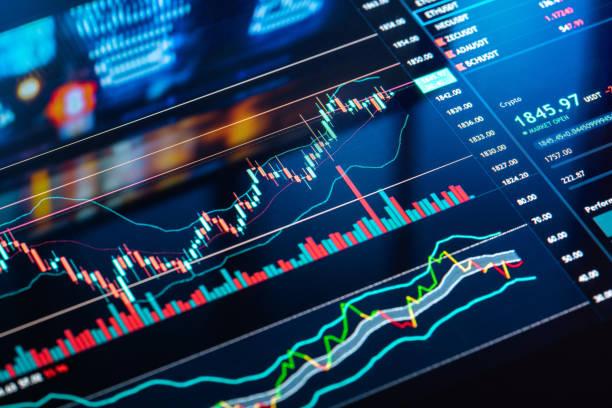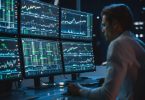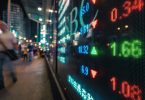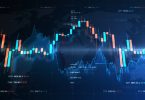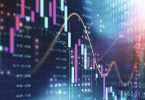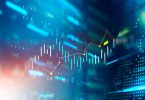The Future of Trading: Emerging Trends and Innovations Shaping the Markets
The world of trading is evolving at an unprecedented pace, driven by advances in technology, shifts in global economic dynamics, and the ever-growing accessibility of financial markets. The future of trading is likely to look vastly different from what we know today. The fusion of artificial intelligence (AI), machine learning, automation, and blockchain technology is creating new opportunities, while at the same time, challenging traditional methods. This transformation has the potential to democratize trading, allowing anyone with an internet connection to participate in financial markets and access sophisticated tools and strategies that were once reserved for institutional investors.
In this article, we will explore the key trends and innovations that are shaping the future of trading. From the rise of algorithmic and high-frequency trading to the development of decentralized finance (DeFi) and the increasing importance of data analytics, these forces will redefine how we trade in the coming years.
1. The Rise of Artificial Intelligence and Machine Learning
Artificial intelligence (AI) and machine learning (ML) are transforming the way traders analyze markets, make decisions, and execute trades. These technologies enable algorithms to process vast amounts of data at lightning speed, detect patterns, and adapt to changing market conditions without human intervention. In the future, AI and ML will continue to revolutionize trading by enhancing decision-making and improving efficiency.
AI-Powered Trading Algorithms
AI-powered algorithms can analyze financial data, news, social media, and even economic reports in real-time to generate trading signals. By incorporating sentiment analysis, these algorithms can gauge market sentiment and predict price movements with high accuracy. For example, if AI identifies positive sentiment in social media discussions surrounding a particular stock, it may recommend a buy order.
Moreover, machine learning algorithms can optimize their strategies over time by learning from past market behavior. This ability to learn from data and adapt continuously makes AI and ML valuable tools for traders who want to stay ahead of the curve and improve their trading performance.
Automation of Trading Strategies
Automated trading, driven by AI and machine learning, is making it possible for traders to execute sophisticated strategies without manual intervention. Traders can set predefined parameters for their trades (such as risk tolerance, profit targets, and technical indicators) and allow the system to make decisions on their behalf. This level of automation reduces the emotional aspects of trading, helping traders stay disciplined and focused on their strategies.
In the future, we can expect even greater automation, where traders will interact with platforms that autonomously adjust strategies, rebalance portfolios, and optimize trades based on real-time data and market conditions. For professional traders and investors, this opens up new avenues for improving consistency and performance.
2. Blockchain and Decentralized Finance (DeFi)
Blockchain technology, the foundation of cryptocurrencies like Bitcoin and Ethereum, is gaining momentum not only in the world of digital currencies but also in the realm of financial trading. Blockchain’s decentralized nature and its ability to facilitate transparent, secure transactions without intermediaries are poised to disrupt traditional trading systems.
Decentralized Exchanges (DEXs)
Decentralized exchanges (DEXs) are platforms that allow users to trade cryptocurrencies directly with one another, without relying on a centralized authority like traditional exchanges (e.g., Coinbase or Binance). DEXs operate on blockchain networks, offering increased transparency, security, and control over one’s assets. These platforms have become increasingly popular as traders look for alternatives to centralized systems that are susceptible to regulatory scrutiny, hacking, and downtime.
As blockchain technology continues to mature, DEXs are expected to become more sophisticated, enabling trading across a wider range of assets (e.g., stocks, commodities, or even real estate) in a decentralized environment. This shift could democratize trading, allowing anyone to trade securely without relying on traditional intermediaries such as brokers or exchanges.
Smart Contracts and Tokenization
Smart contracts, self-executing contracts with the terms of the agreement directly written into code, are a key feature of blockchain technology. These contracts are used to automate the settlement of trades and reduce the need for third-party intermediaries. In the future, we can expect an increasing use of smart contracts to facilitate everything from trade execution to clearing and settlement.
Additionally, tokenization is transforming the way assets are traded. Tokenization involves converting real-world assets (e.g., stocks, bonds, real estate) into digital tokens that can be traded on a blockchain. This opens up the possibility of fractional ownership, allowing investors to buy and sell portions of expensive assets that were previously out of reach. For example, tokenizing a property could enable investors to purchase small fractions of that property, providing more opportunities for diversification and access to illiquid markets.
3. Cryptocurrency and Digital Assets
The rise of cryptocurrencies has undoubtedly been one of the most significant shifts in the financial markets in recent years. As more investors and institutions begin to see cryptocurrencies as a legitimate asset class, the future of trading is likely to be heavily influenced by digital currencies and blockchain technology.
Mainstream Adoption of Cryptocurrencies
Cryptocurrencies like Bitcoin and Ethereum have already proven themselves as a store of value and a hedge against inflation, but in the future, their use may extend beyond speculative trading. Central banks in various countries are exploring the creation of Central Bank Digital Currencies (CBDCs), which would enable governments to issue their own digital currencies. This would revolutionize the way money is exchanged and could introduce new trading opportunities.
In addition, cryptocurrencies may become increasingly integrated into traditional financial systems. For instance, institutional investors, such as hedge funds, pension funds, and asset managers, are gradually gaining exposure to cryptocurrencies as part of their portfolios. Over time, this mainstream adoption could drive further liquidity and price stability in the digital asset markets, making them more attractive for traders.
Tokenized Assets and NFTs
The rise of Non-Fungible Tokens (NFTs) has brought further innovation to the digital assets space. NFTs represent unique ownership of digital assets, such as art, music, and collectibles. The future of trading could see the expansion of NFT markets, as individuals and institutions increasingly recognize the value of tokenized ownership.
Tokenized assets, including NFTs, are expected to play a major role in the future of trading. As blockchain technology evolves, more types of assets could be tokenized and traded, from intellectual property to shares in companies. This expansion opens up a world of new trading possibilities and opportunities for investors to diversify their portfolios.
4. The Role of Data Analytics in Trading
The future of trading is highly data-driven. With the increasing availability of real-time market data, big data analytics, and advanced algorithms, traders will have access to an unprecedented amount of information. Data analytics will continue to play a central role in helping traders make better, more informed decisions.
Big Data and Predictive Analytics
Big data refers to vast amounts of structured and unstructured data generated by market activities, social media, news sources, and more. Traders who can analyze and interpret this data will have a distinct advantage. Predictive analytics, powered by AI and machine learning, will be used to forecast price movements and identify potential opportunities before they emerge.
For example, AI systems might analyze historical data, news reports, and social media trends to predict the future price movements of a stock. This level of sophistication will enable traders to make more informed decisions, while also improving their ability to manage risks and reduce the impact of market volatility.
Alternative Data Sources
In addition to traditional market data, traders are increasingly relying on alternative data sources, such as satellite imagery, weather patterns, and consumer behavior insights, to gain a competitive edge. The use of alternative data enables traders to develop unique insights that are not readily available through conventional financial data.
As data analytics tools become more advanced, traders will be able to tap into a wider variety of information, improving their ability to spot market inefficiencies, uncover trends, and predict future price movements. This will enable more precise trading strategies and better risk management.
5. The Democratization of Trading
One of the most significant trends shaping the future of trading is the democratization of financial markets. Historically, trading was limited to wealthy individuals, institutional investors, and professional traders who had access to sophisticated tools, resources, and networks. However, the advent of online brokerage platforms, commission-free trading, and social trading has leveled the playing field, making trading accessible to anyone with an internet connection.
Social Trading and Copy Trading
Social trading, which allows traders to share strategies, insights, and performance, has gained immense popularity. Platforms like eToro and CopyTrader enable inexperienced traders to copy the trades of successful investors, providing them with an opportunity to learn while participating in the markets. This social aspect of trading is likely to expand, with more platforms offering community-driven insights and real-time market updates.
Education and Empowerment
As more people gain access to trading tools and platforms, there is an increasing demand for financial education. In the future, traders will have access to a wealth of resources, including online courses, webinars, and forums, to help them understand complex trading concepts and strategies. This trend toward education and empowerment will enable more individuals to navigate the markets successfully and responsibly.
6. The Impact of Regulation and Ethical Considerations
As trading becomes more accessible and technology-driven, regulatory bodies are likely to impose stricter rules to protect investors and ensure market stability. In the future, regulations surrounding AI, blockchain, and cryptocurrencies will need to evolve to keep pace with the rapidly changing landscape.
Ethical considerations will also play a role in the future of trading. Issues such as market manipulation, algorithmic transparency, and the environmental impact of blockchain mining will need to be addressed as the industry continues to grow. Traders, platforms, and regulators will need to collaborate to create a fair and sustainable trading ecosystem for all participants.
Conclusion
The future of trading is poised for significant transformation, with new technologies, tools, and trends reshaping the way markets operate. From the rise of AI and machine learning to the democratization of trading and the growth of blockchain-based systems, these developments are providing traders with unprecedented opportunities to profit from financial markets. However, they also present new challenges and risks that require traders to adapt, innovate, and stay informed. By embracing these changes and continuously refining their skills, traders can position themselves for success in the evolving landscape of financial markets.
